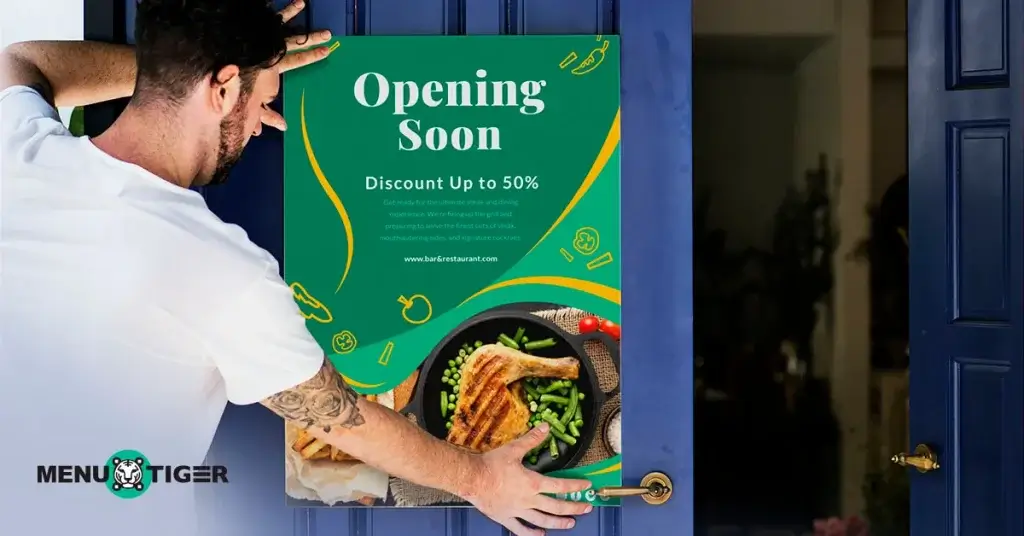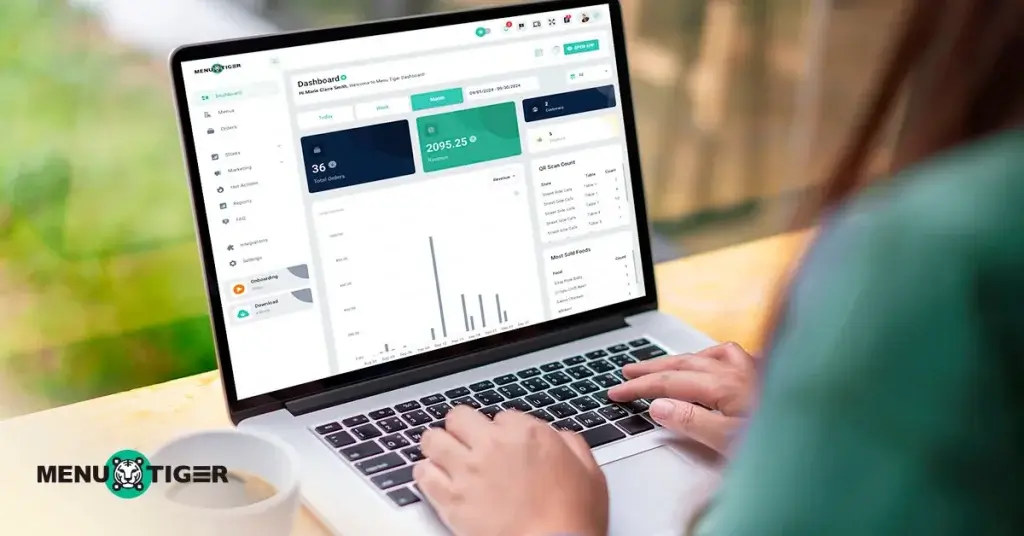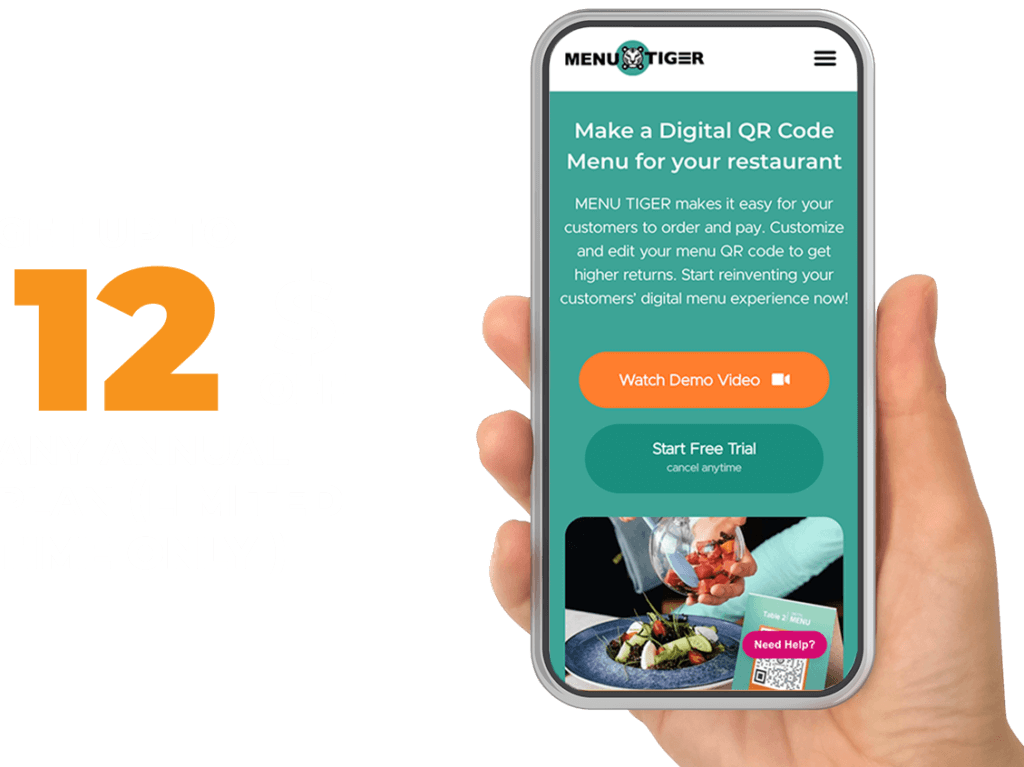Everything is now set in your restaurant or bar and is almost ready to open; the menu is polished, the staff is prepped, and the space is buzzing with excitement.
But before you open your doors to the public with a big splash, there’s one smart move successful business veterans know — the soft opening.
“But, what is a soft opening?”
Think of it as a sneak peek, a low-key, exclusive trial run during which you can iron out any wrinkles in your menu, customer service, QR code ordering system, and management tools and fine-tune your operations without the full glare of the spotlight.
In this blog post, you will go through the ins and outs of a successful soft opening, breaking down simple steps to pull off the perfect soft launch.
Table of Contents
ToggleSoft Opening Meaning: What It Is and Why It Matters for Your Restaurant
A soft opening, best known as a soft launch, is a preview of your restaurant’s offerings to your target audience.
It’s an invite-only event and an opportunity to test your services and menu items with a limited number of people.
You can send invitations to your family, closest friends, and even the group of target customers you aim to serve.
This way, you’ll be able to manage and adjust any of your products and services ahead of time before fully implementing them in your operations.
Soft opening vs grand opening: which is which?
Sure, a grand opening is noteworthy as it means you’re fully opening your business to the public, and it is officially ready for service.
The downside is you can expect the unexpected during this period. Potentially, the number of visitors can balloon in a short span of time, which can be a challenge if you’re not that prepared enough to accommodate them all.
So, it’s smart to test the waters first and launch something a bit less grand. You can opt for a soft launch instead.
Yelp for Restaurants pointed out that a soft launch can be a smart choice to better set the stage for your grand opening.
If you’re able to pull it off right, it can assist your young business in polishing your operations, getting helpful feedback, and preparing for the big-time opening.

7-step guide to a successful soft opening of restaurants
Indeed, a soft opening vs a grand opening can be conflicting events, making it difficult to decide.
But take into account that a soft opening or soft launching is more than exclusively inviting a couple of people; it goes way more in detail than that.
Securing a smooth soft opening restaurant event is the goal before you fully welcome the public.
To help you prepare, here’s a comprehensive guide you can follow:
Step 1: Define your goals
Reflect on what you want to achieve in this soft opening.
It could be testing your menu items, training your staff, evaluating your operation workflow, or conducting a survey for food and customer services.
Outlining specific objectives helps you to measure what areas of your business need improvement.
As you define your restaurant goals and objectives, remember to be a visionary during this stage. Think deeply about the experience you wish to create.
What story does your establishment tell? What feelings do you want your guests to walk away with?
With these clear visions, you ensure that you’ll be able to make informed business decisions that reflect your greater purposes.
Step 2: Invite a limited guest list

You should invite those who understand your goals and visions, as they can give you profound and valuable insights into how to improve.
Friends, family, or selected community members. Think of them as your critiques before moving to the real deal.
Having to have a list of a manageable number of people, make sure you have full control over the environment so you can truly focus on service quality.
You can also add local influencers or media to the list for early publicity.
Step 3: Create a limited soft-opening menu

Your food, drinks, add-ons, down to the condiments speak for your business, so you might as well make the most out of it.
But you don’t need to serve all of them. A limited menu is not a compromise but an opportunity for your kitchen to focus on executing a few dishes while maintaining consistency and quality.
It’s also a perfect time to test out your food and drink pairing ideas to gather recommendations to improve or develop other combos.
Step 4: Train and observe your staff
Use the soft opening of your restaurant to simulate a real service day.
Your staff can benefit from this scenario’s operations, as they can apply what they have learned in theory to practice.
Be keen on observing how they handle customer service, workflow, and crisis.
Through this, you can pinpoint areas for improvement while fostering a culture of accountability and professionalism among your staff.
With this opportunity, you’ll be setting the stage for a smoother, more successful grand opening.
Step 5: Test technology and other automated systems
A soft opening restaurant event reveals weak spots in your operations before you fully open.
This is the best time to test-run restaurant technology tools and systems.
Ensure your point-of-sale (POS) system, kitchen display system, reservation smart menu software, and other technologies you have are running smoothly.
If there are any interruptions, delays, or errors, note them down so you can resolve them immediately after the event.
Also, review how your team handles table turnovers, communication between the kitchen and front of the house, and order processing.
This is to determine which aspect of your operations needs to be streamlined.
Step 6: Gather feedback
Encourage your guests to share their input about the food, service, place, ambiance, and every aspect of your restaurant.
Make use of a QR code menu placed on table tents for them to access your survey forms at their own convenience.
Using digital surveys gives them a sense of privacy, unlike jotting down their responses on a piece of paper. Be open to both praise and criticism and use the data you gather to fine-tune your operations.
Step 7: Make final adjustments
Speaking of fine-tuning, after the event, meet with your team to review and discuss the feedback as well as evaluate how the event went.
Based on your gathered data and observations, identify key areas that need thorough attention, whether it’s the food quality, service speed, or operation issues.
Make necessary adjustments or changes to prepare you for your official launch.
What happens after the restaurant soft opening

This is where you’re going to play your cards wisely.
After all the adjustments and changes made, it’s time to build buzz and prepare for the big one — your grand opening.
Plan your launching advertising campaigns, including the channels you’ll use, the subject you want to highlight, and the audience you’re targeting.
Maximizing social media for restaurants is one of the most effective ways to hype up your campaigns with the right strategies.
Once set, proceed to your project plan for the event. Including in your plan the special promotions, press invitations, and other activities designed to draw the crowd.
Set the Stage for Success with a Restaurant Ordering System

Whether it’s a soft opening or a grand opening, you want to provide your guests with the highest-quality service possible, especially when it comes to operations.
NetSuite, a business management software, emphasizes that effective operations management practices increase a business’s competitiveness and prevent it from wasting resources on activities that don’t advance its strategic goals.
Achieving this level of operations is a smart choice if you’re open to using modern approaches, such as digital technologies like a restaurant ordering system like MENU TIGER.
To give you a teaser, here’s an outline of some of the services and features it offers:
Customizable digital menu
After your soft opening’s success, you’re ready to make adjustments, especially to the soft opening menu offered.
The best thing about having a digital menu is you can update everything without exerting any efforts to print and design a new menu list ready for the official launch.
Everything can be done anytime, anywhere, without hidden charges.
This lessens your tasks and allows you to focus on other aspects of your preparations.
Simplified performance metrics
Get yourself comprehensive sales and revenue information at a glance in real time.
So, during the event, you can see in one frame what items have been performing well and what have not.
MENU TIGER designed it in a way that even every member of your team can thoroughly understand the status of your product.
Marketing tool essentials
After all, it all boils down to how effective your marketing strategies are. If you’re still starting out, this might be a challenge for you.
That’s why this innovative software provides essential tools that can set a platform for you to begin.
Here, you can create your restaurant website, reflecting your brand’s identity and personality. This is where your offerings are placed for better access.
Aside from that, you can implement email marketing campaigns using the customer email list it gathers once customers access your digital menu. You can include the promotions you have, soft opening announcements, or new products to offer.
It’s very helpful for starters to connect directly with your customers through personalized emails.
Digital restaurant menu QR code ordering system
With a simple scan of the QR codes on table tents and counters, your menu is automatically accessed with minimal effort.
Adding to this convenience is that customers can do more than just order.
They can pay directly through various e-payment alternatives, provide feedback, and customize their orders based on their interests and preferences.
So, no need for a long queue at the counter or to experience a slow table turnover.
Improved call button system
During this period, you want to make sure that your staff can respond to every customer’s needs.
To streamline such a full-packed event, this smart menu software has a restaurant waiter call button system that allows customers to send out their requests to your staff.
It could be a request for a glass of water, additional tissue, or simply asking to clean the table. All they need is to access your digital menu, click the bell, and input the request.
This is automatically reflected in your admin panel, where your staff can be notified immediately.
Thus, respond with that level of service speed.

Start with a soft open, end with a strong finish
You’ve probably come to think, “What is a soft opening? Is this even worth doing?”
Apparently, it’s a big yes.
This sets a perfect stage for your grand opening. Here, you can give a preview of what you have, setting the tone for your customers’ expectations. It’s like teasing them before pleasing them.
If done right, you’ll have a great opportunity to improve everything from food to your overall services before fully opening it to the public.
Speaking of service improvement, try a QR code ordering system and other smart menu software, like MENU TIGER.
This guarantees a high return on investment, not just monetarily but also positive feedback from your customers.
There’s more to experience. So head over to the website, sign up, and have a flawless business debut.
FAQs
A soft opening for a restaurant or bar lasts anywhere from a few days to a few weeks.
The exact duration depends on several factors, including the goals of your soft opening, the complexity of operations, and feedback from guests.
Here’s a general breakdown:
Short soft opening
This can run for two to seven days for smaller venues or those with simpler operations.
A brief soft launch allows staff to get comfortable the workflow, identify any immediate issues, and gather some initial customer feedback.
Extended soft opening
Larger or more complex venues may take longer to ensure everything runs smoothly. It can take one to four weeks to allow more time for refinement before the official launch.
When doing a soft opening, you’re in a trial period, where operations are tested with a limited audience. It allows staff to refine service, menu, and logistics before the official launch.
In contrast, a hard opening is the official grand opening, which is fully publicized and promoted. At a hard opening, the venue opens to the general public with full operations in place.
This marks the official start of the business.





